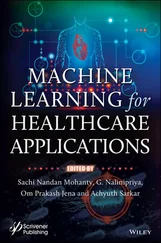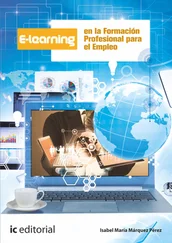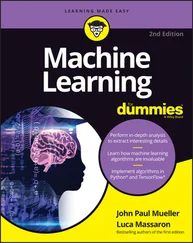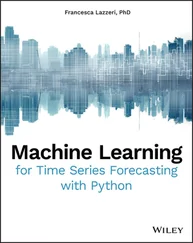147 146
148 147
149 148
150 149
151 150
152 151
153 152
154 153
155 154
156 155
157 156
158 157
159 158
160 159
161 160
162 161
163 162
164 163
165 164
166 165
167 167
168 168
169 169
170 170
171 171
172 172
173 173
174 174
175 175
176 176
177 177
178 178
179 179
180 180
181 181
182 182
183 183
184 184
185 185
186 186
187 187
188 188
189 189
190 190
191 191
192 192
193 193
194 194
195 195
196 196
197 197
Deep Learning for Physical Scientists
Accelerating Research with Machine Learning
Edward O. Pyzer‐Knapp
IBM Research UK
Data Centric Cognitive Systems
Daresbury Laboratory
Warrington
UK
Matthew Benatan
IBM Research UK
Data Centric Cognitive Systems
Daresbury Laboratory
Warrington
UK

This edition first published 2022
© 2022 John Wiley & Sons Ltd
All rights reserved. No part of this publication may be reproduced, stored in a retrieval system, or transmitted, in any form or by any means, electronic, mechanical, photocopying, recording or otherwise, except as permitted by law. Advice on how to obtain permission to reuse material from this title is available at http://www.wiley.com/go/permissions.
The right of Edward O. Pyzer-Knapp and Matthew Benatan to be identified as the authors of this work has been asserted in accordance with law.
Registered Offices John Wiley & Sons, Inc., 111 River Street, Hoboken, NJ 07030, USA
John Wiley & Sons Ltd, The Atrium, Southern Gate, Chichester, West Sussex, PO19 8SQ, UK
Editorial Office The Atrium, Southern Gate, Chichester, West Sussex, PO19 8SQ, UK
For details of our global editorial offices, customer services, and more information about Wiley products visit us at www.wiley.com.
Wiley also publishes its books in a variety of electronic formats and by print-on-demand. Some content that appears in standard print versions of this book may not be available in other formats.
Limit of Liability/Disclaimer of Warranty In view of ongoing research, equipment modifications, changes in governmental regulations, and the constant flow of information relating to the use of experimental reagents, equipment, and devices, the reader is urged to review and evaluate the information provided in the package insert or instructions for each chemical, piece of equipment, reagent, or device for, among other things, any changes in the instructions or indication of usage and for added warnings and precautions. While the publisher and authors have used their best efforts in preparing this book, they make no representations or warranties with respect to the accuracy or completeness of the contents of this work and specifically disclaim all warranties, including without limitation any implied warranties of merchantability or fitness for a particular purpose. No warranty may be created or extended by sales representatives, written sales materials or promotional statements for this work. This work is sold with the understanding that the publisher is not engaged in rendering professional services. The advice and strategies contained herein may not be suitable for your situation. You should consult with a professional where appropriate. Neither the publisher nor author shall be liable for any loss of profit or any other commercial damages, including but not limited to special, incidental, consequential, or other damages. The fact that an organization, website, or product is referred to in this work as a citation and/or potential source of further information does not mean that the publisher and authors endorse the information or services the organization, website, or product may provide or recommendations it may make. Further, readers should be aware that websites listed in this work may have changed or disappeared between when this work was written and when it is read. Neither the publisher nor authors shall be liable for any loss of profit or any other commercial damages, including but not limited to special, incidental, consequential, or other damages.
For general information on our other products and services or for technical support, please contact our Customer Care Department within the United States at (800) 762-2974, outside the United States at (317) 572-3993 or fax (317) 572-4002.
Wiley also publishes its books in a variety of electronic formats. Some content that appears in print may not be available in electronic formats. For more information about Wiley products, visit our web site at ww.wiley.com.
Library of Congress Cataloging‐in‐Publication Data
Names: Pyzer-Knapp, Edward O., author. | Benatan, Matthew, author.
Title: Deep learning for physical scientists : accelerating research with machine learning / Edward O. Pyzer-Knapp, IBM Research UK, Data Centric Cognitive Systems, Daresbury Laboratory, Warrington UK, Matthew Benatan, IBM Research UK, Data Centric Cognitive Systems, Daresbury Laboratory, Warrington UK.
Description: Hoboken, NJ : Wiley, 2022. | Includes index.
Identifiers: LCCN 2021036996 (print) | LCCN 2021036997 (ebook) | ISBN 9781119408338 (hardback) | ISBN 9781119408321 (adobe pdf) | ISBN 9781119408352 (epub)
Subjects: LCSH: Physical sciences–Data processing. | Machine learning.
Classification: LCC Q183.9 .P99 2022 (print) | LCC Q183.9 (ebook) | DDC 500.20285/631–dc23
LC record available at https://lccn.loc.gov/2021036996LC ebook record available at https://lccn.loc.gov/2021036997
Cover Design: Wiley
Cover Image: © Anatolyi Deryenko/Alamy Stock Photo
Dr Edward O. Pyzer‐Knappis the worldwide lead for AI Enriched Modelling and Simulation at IBM Research. Previously, he obtained his PhD from the University of Cambridge using state of the art computational techniques to accelerate materials design then moving to Harvard where he was in charge of the day‐to‐day running of the Harvard Clean Energy Project ‐ a collaboration with IBM which combined massive distributed computing, quantum‐mechanical simulations, and machine‐learning to accelerate discovery of the next generation of organic photovoltaic materials. He is also the Visiting Professor of Industrially Applied AI at the University of Liverpool, and the Editor in Chief for Applied AI Letters, a journal with a focus on real‐world application and validation of AI.
Dr Matt Benatanreceived his PhD in Audio‐Visual Speech Processing from the University of Leeds, after which he went on to pursue a career in AI research within industry. His work to date has involved the research and development of AI techniques for a broad variety of domains, from applications in audio processing through to materials discovery. His research interests include Computer Vision, Signal Processing, Bayesian Optimization, and Scalable Bayesian Inference.
EPK: This book would not have been possible without the support of my wonderful wife, Imogen.
MB: Thanks to my wife Rebecca and parents Dan & Debby for their continuing support.
1 Prefix – Learning to “Think Deep”
Paradigm shifts in the way we do science occur when the stars align. For this to occur we must have three key ingredients:
Читать дальше













